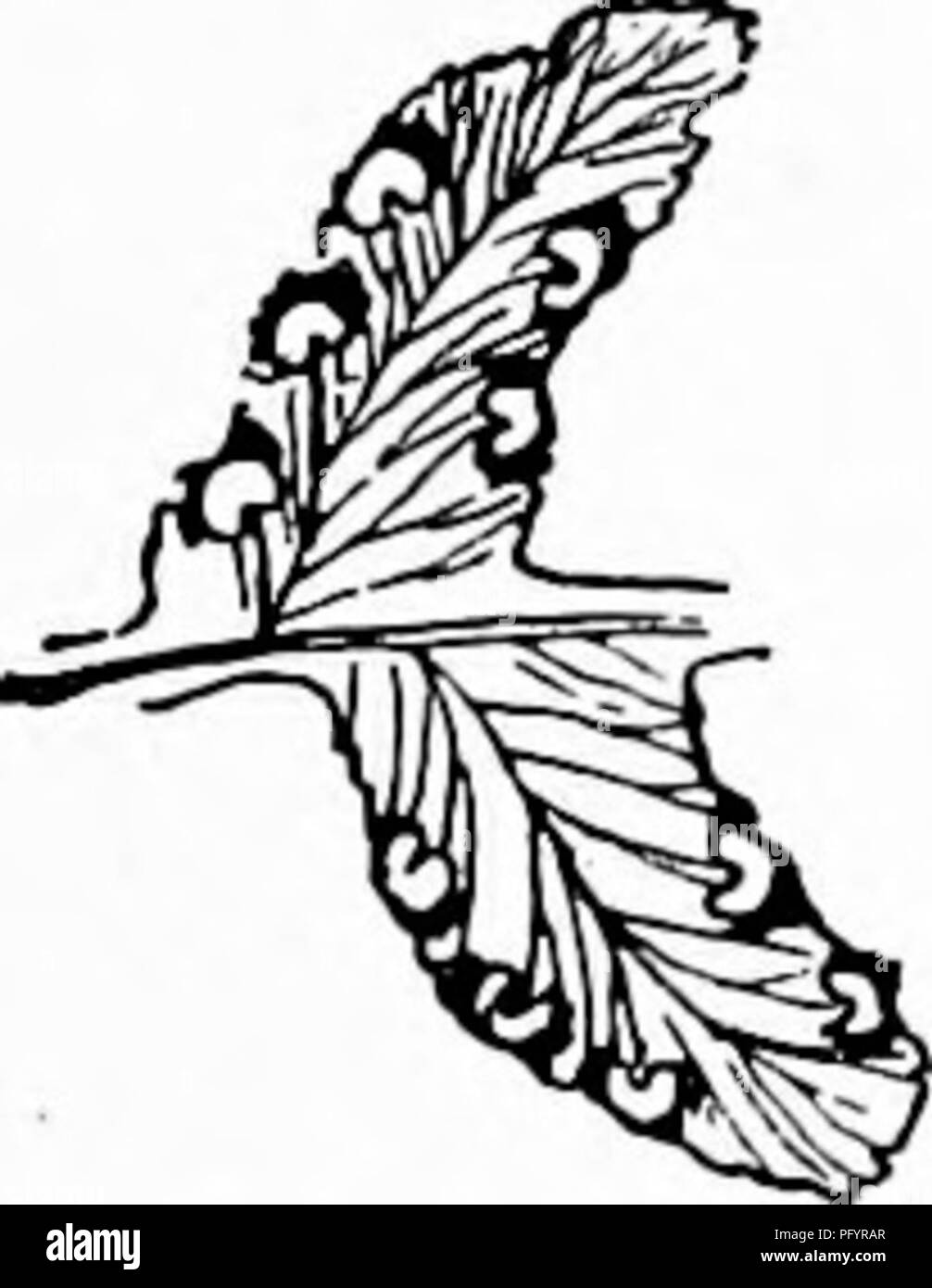. Handbook of nature-study for teachers and parents, based on the Cornell nature-study leaflets. Nature study. Ul.. I. Fruiting pinnule of the boulder fern, enlarged. 2. Fruiting pinnules of spleenwort, enlarged. the spores distinctly. The spore-cases may also be seen with a hand lens, the spores seeming then to be mere dust. The different ways the ferns blanket their spore-cases is a delightful study, and one which the pupils enjoy very much. All of our common ferns except the careless little polypody thus protect their spores. Whether this blanket be circular, or horse- shoe-shaped, or oblon

Image details
Contributor:
Central Historic Books / Alamy Stock PhotoImage ID:
PFYRARFile size:
7.1 MB (178.3 KB Compressed download)Releases:
Model - no | Property - noDo I need a release?Dimensions:
1391 x 1796 px | 23.6 x 30.4 cm | 9.3 x 12 inches | 150dpiMore information:
This image is a public domain image, which means either that copyright has expired in the image or the copyright holder has waived their copyright. Alamy charges you a fee for access to the high resolution copy of the image.
This image could have imperfections as it’s either historical or reportage.
. Handbook of nature-study for teachers and parents, based on the Cornell nature-study leaflets. Nature study. Ul.. I. Fruiting pinnule of the boulder fern, enlarged. 2. Fruiting pinnules of spleenwort, enlarged. the spores distinctly. The spore-cases may also be seen with a hand lens, the spores seeming then to be mere dust. The different ways the ferns blanket their spore-cases is a delightful study, and one which the pupils enjoy very much. All of our common ferns except the careless little polypody thus protect their spores. Whether this blanket be circular, or horse- shoe-shaped, or oblong, or in the form of pocket or cup, depends upon the genus to which the fern belongs. The little protect- ing blanket-membrane is called the indu- sium, and while its shape distinguishes the genus, the position in which it grows determines the species. I shall never forget my surprise and delight when, as a young girl, I visited the Philadelphia Cen- tennial Expositon, and there in the great conservatories saw for the first time the tree-ferns of the tropics. One of these was labelled Dicksonia, and mystified, I asked the privilege of examining the fronds for fruiting organs. When lo! the indusium proved to be a little cup, borne at the base of the tooth of the pinnule, exactly like that of our boulder fern, which is also a Dicksonia. I had a sudden feeling that I must have fern friends all over the world. The children are always interested in the way the maidenhair folds over the tips of her scallops to protect her spore nursery; and while many of our ferns have their fertile fronds very similar in form to the sterile ones, yet there are many common ferns with fertile fronds that look so different from the others, that one would not think they were originally of the same pattern; but although their pinnules are changed into cups, or spore-pockets, of various shapes, if they be examined carefully they will be seen to have the same general structure and the same divisions howeve